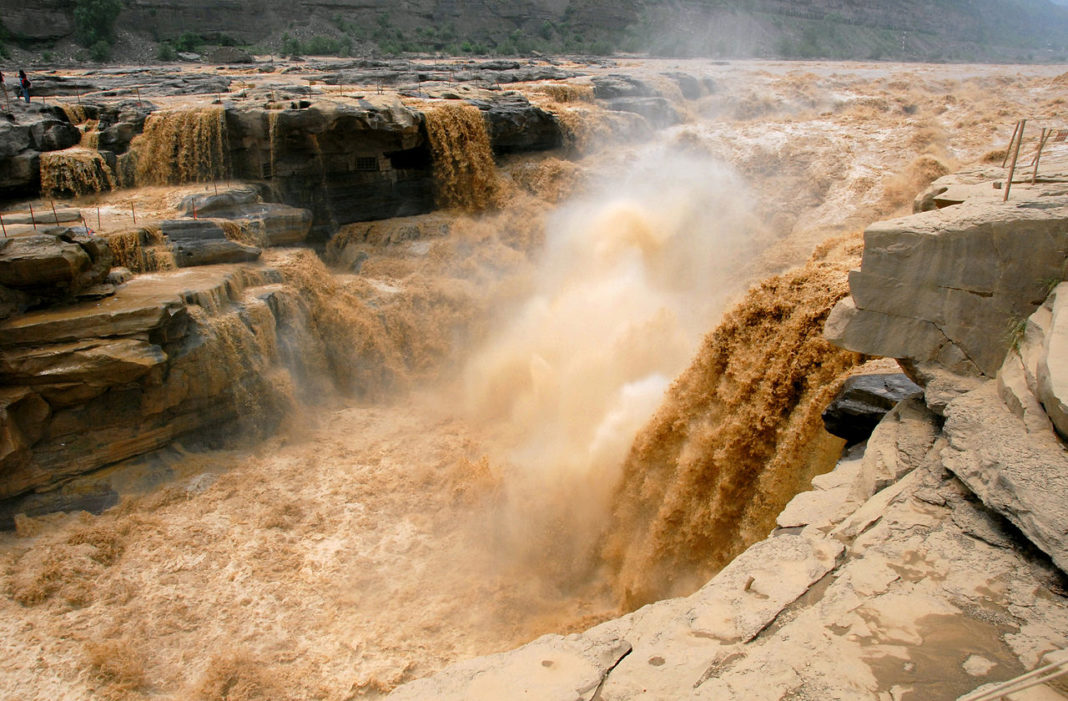The Hukou Waterfall is the largest waterfall on the Yellow River, the second largest waterfall in China (after the Huangguoshu Waterfall in Guizhou), and the world’s largest yellow waterfall.
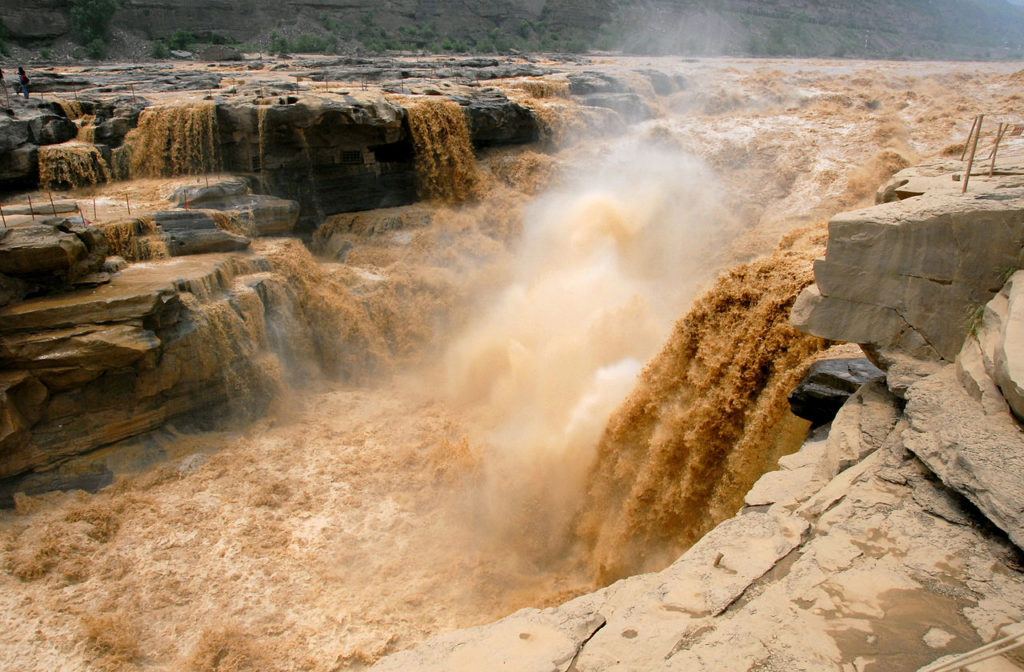
The width of the waterfall changes with the season, usually 30 m wide but increasing to 50 m during flood season. It has a height of over 20 m. When the Yellow River approaches Hukou Mountain, blocked by mountains on both sides, its width is abruptly narrowed down to 20–30 m.
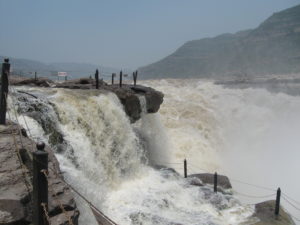
The water’s velocity increases and then plunges over a narrow opening on a cliff, forming a waterfall 15 m high and 20 m wide as if water were pouring down from a huge teapot. Hence it gets the name Hukou (literally, “flask mouth”) Waterfall.
In the middle of the river, about 3,000 m from the Hukou Waterfall, an enormous rock catches the attention of visitors. When the Yellow River flows to this point, divides into two, rolling and roaring on and on from both sides of the rock before reconverging.
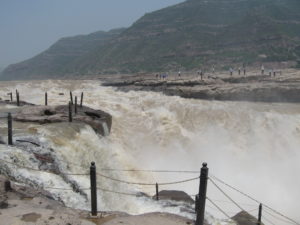
Beneath the waterfall is the Qilangwo Bridge which connects the two provinces of Shanxi and Shaanxi. In the sunshine, the mist is refracted by sunlight to create a rainbow spanning the water like a colorful bridge. In 1991, Hukou Waterfall was named one of the “40 Best” national scenic spots.
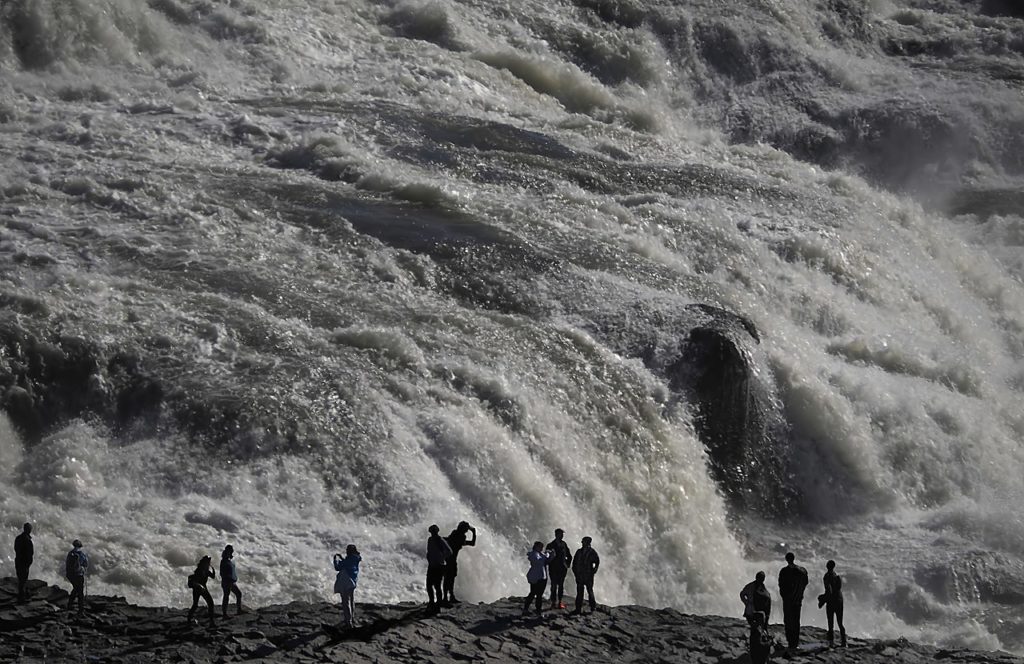
Due to its awkward location in the Loess Plateau hinterlands, Hukou was once very difficult to access. After the local government improved transport and tourist facilities, the number of tourists rose from 20,000 in 1994 to 47,000 in 1995. The figure for 1996 reached 100,000 tourists.
According to the Internet





